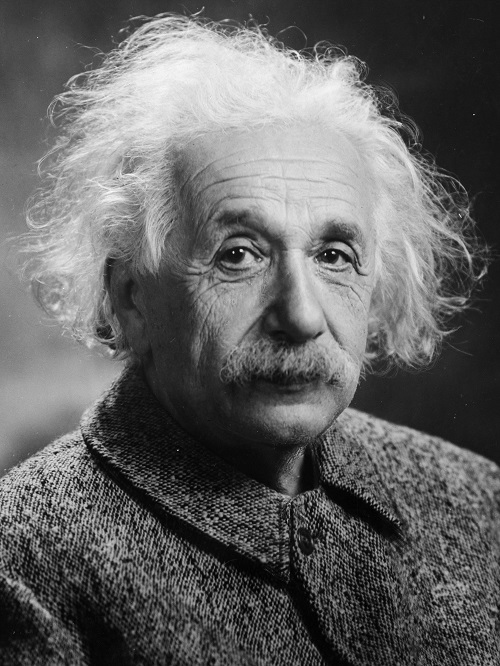It’s on this day each year that so many debate the merits of Dutch apple a la mode vs. lemon meringue pie.
It’s the day pie lovers embrace the (other) Pi (3.14…), transforming March 14th into a good reason to globally celebrate Pi with pie.
For those of us who celebrate fundamental scientific research every day, we raise our forkfuls for yet another reason: to celebrate the man who brought us theories about space and time that, among other things, make today’s GPS so accurate and our search for gravitational waves a reality. Yes, Pi Day is also Albert Einstein’s birthday.
Soon, I will have the honor of participating in this year’s World Science Festival in Australia, where so much of my involvement there is a reflection of science and technology that hinges on Einstein’s contributions and specifically his connection to the NSF-funded Laser Interferometer Gravitational-wave Observatory (LIGO).
Einstein, the “poster child” for fundamental scientific research
It’s been a little over a year since the National Science Foundation (NSF) announced that the project it had funded for more than 40 years, LIGO, had detected gravitational waves resulting from two merging black holes 1.3 billion lightyears away.
Not only did Einstein theorize the existence of gravitational waves, his theories provided the tools to set up experiments, simulations and instrumentation that could realize his bold ideas. How did we know LIGO’s detection was two black holes merging? Einstein’s theory of General Relativity. Gravitational physicists from around the world had developed numerical codes that model black holes in this theory. This new discipline, called Numerical Relativity, is the one that provided the simulations that agree with the observations.
And these simulations, done on supercomputers, weren’t easy to achieve. Most of the breakthroughs in this area have been achieved by brilliant researchers in only the past 15 years, and by a large margin most of this work in the U.S. was funded by NSF.
But this is what we do. And the payoff is that NSF research, along with our national and international collaborators, has literally opened a new window to our universe. We have found a way to observe some of the most powerful cosmic phenomena that occur in the farthest reaches of our universe, without leaving our own planet, and we have achieved the means to understand it! It’s a feat that never ceases to amaze me. And one certainly worthy of quite a bit of pie!
When science gives you new windows…
I’m often asked why I became an astrophysicist, to which I reflect on the wonder I held even as a young girl, looking out at the stars. Today, that same sense of awe is coupled with a curiosity shared far beyond my scientific community. In much the same way one gets to know a school or neighborhood to its fullest extent, I believe collectively we share a desire to learn more about our universe. Only last month, an NSF-funded astronomer was among the cadre who discovered seven Earth-like exoplanets outside our solar system.
NSF has long invested in exploring our universe with ground-based approaches that exploit the electromagnetic spectrum from radio waves to gamma-rays. It has also funded observatories that detect high-energy particles of cosmic origins. Now, with the advent of LIGO, NSF also supports the observation of gravitational waves. In fact, as NSF leadership and our National Science Board distilled the broad range of science into “big ideas” that represent important questions for our future, we naturally determined one of them as “windows on the universe.”
I believe strongly that it’s our investment in fundamental research that will allow us not only to see and understand so much more of our universe, but develop understanding, tools and technology along the way that can also be important economic drivers and excite the next generation of scientists, engineers and mathematicians who test and prove theories and create new theories of their own.
What’s next for LIGO
NSF continues to invest in this project because we believe this is just the beginning for a whole new way to study our universe. The plan for Advanced LIGO is that it will run at three separate times, increasing sensitivity with each new “run” of the project’s two interferometers in Livingston, Louisiana, and Hanford, Washington. The hope was that with this second run that is ongoing, European collaborators would also jump into the observations with their Advanced VIRGO detector, and all of this would potentially increase and improve detections.
At this point, VIRGO is delayed because of technical issues, but the LIGO detectors will likely continue until the summer, and we still hope that VIRGO can join in. Our expectation is that potentially we could still see two to five detections. The third run will occur in 2018.
Additionally, we may hear from India on which location they have officially selected, and their plans for a third LIGO interferometer that could get up and running in 2024. That seems like a long time away, but a third LIGO interferometer would help triangulate signals and potentially allow researchers to pinpoint the origin of these cosmic phenomena more accurately.
These are big plans that potentially will provide big news about our universe. And that’s a win for all of us, anyway you slice it.
